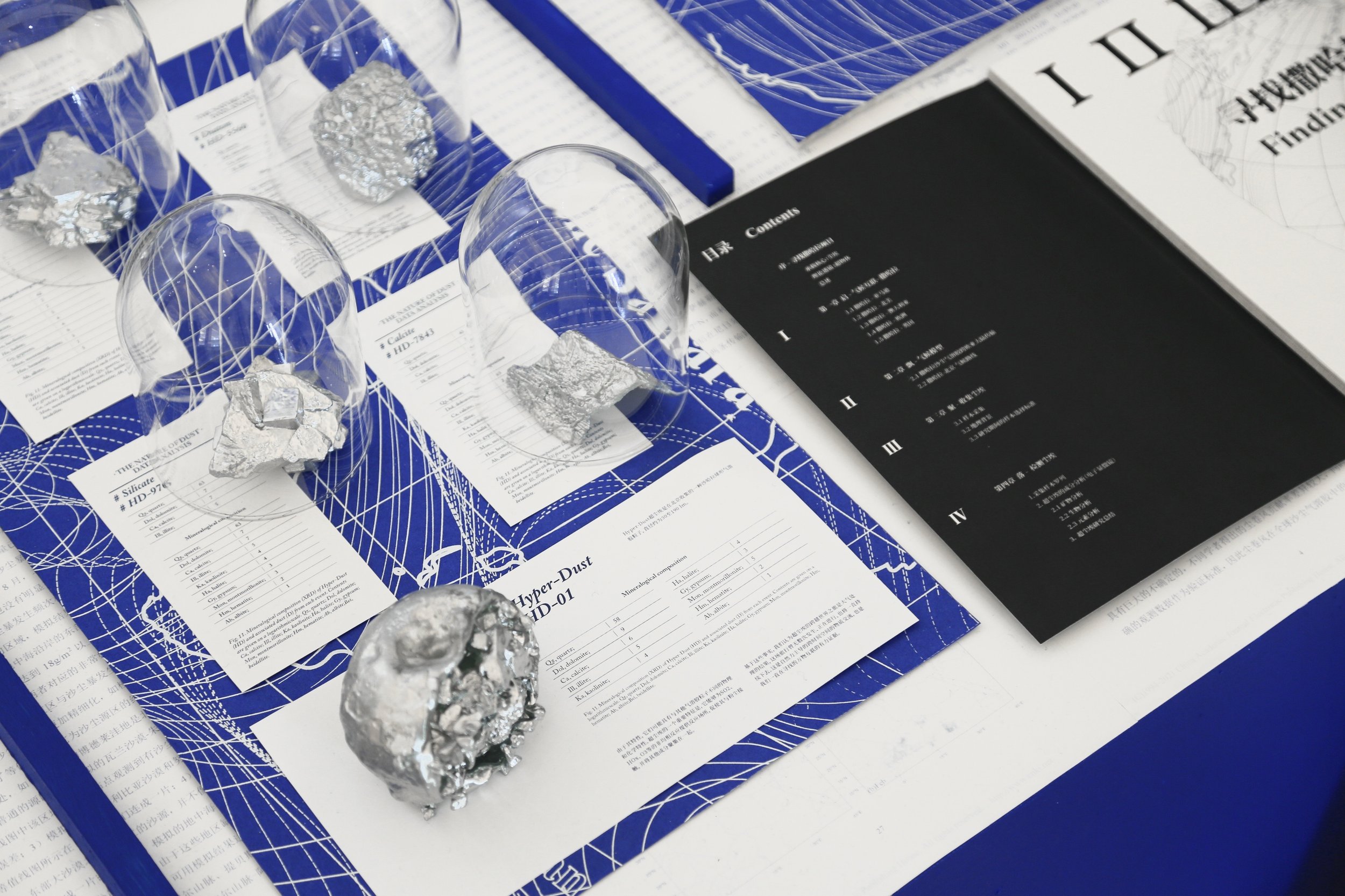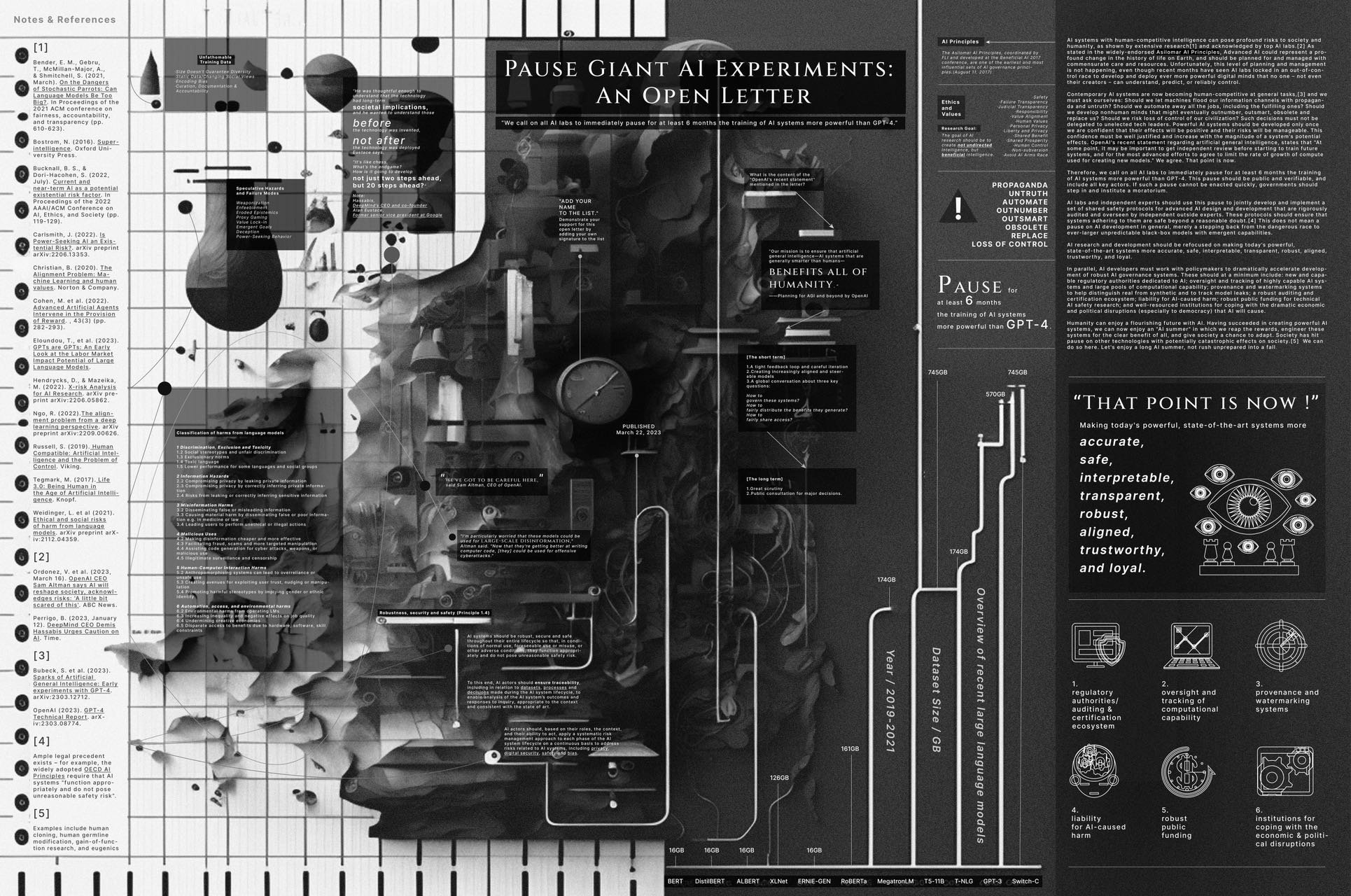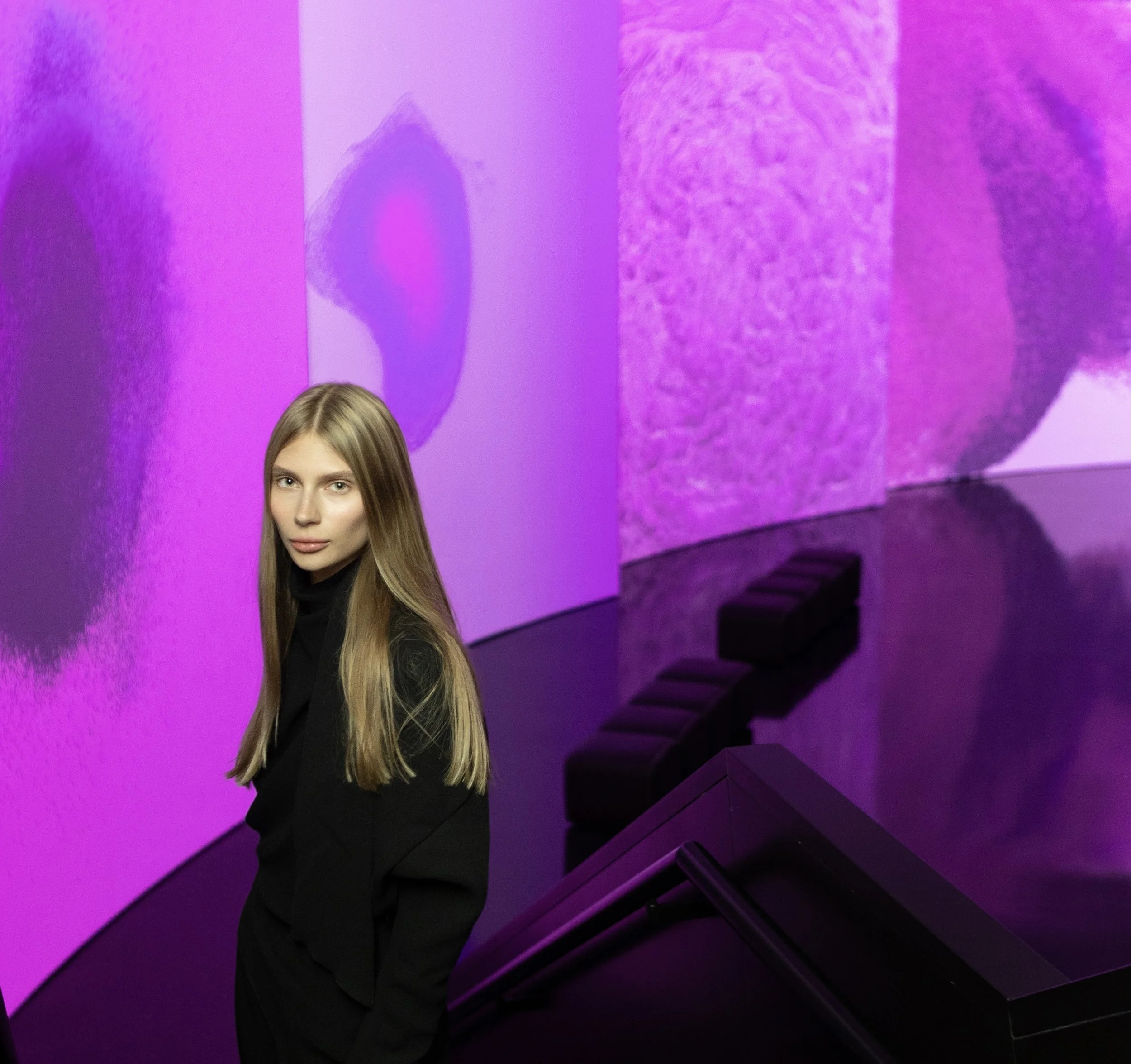INTERVIEW | Ziyao Lin
10 Questions with Ziyao Lin
Ziyao Lin is an artist whose work delves into themes of humanity, nature, the ethics of technology, women's rights, and individual psychology. Through a diverse array of creative forms, including digital media art, experimental video, illustrations, and installations, Ziyao captivates audiences with her distinctive visual style and storytelling.
She holds a Bachelor's degree in Digital Media Art from the School of Design at the Central Academy of Fine Arts and furthered her artistic journey by obtaining a Master's degree in Digital Media from Goldsmiths College, University of London.
Her work has been exhibited in various locations, including London, Beijing, Shenzhen, and Xi'an. Ziyao's accolades include nominations for the Ars Electronica and S+T+ARTS Awards, as well as recognition such as being a Longlist Artist for the Aesthetica Art Award. She has also received the Rising Star Award from the C-IDEA Design Award, the Bronze Award from the Shenzhen Global Design Award during the Shenzhen Design Week, and participation in the Renovators Global Young Creators Programme with the Top 100 Award, etc.
Ziyao Lin - Portrait
INTERVIEW
Please, tell us a little bit about your background and studies. How did you start making art? And are you still following the same aspiration?
I pursued my undergraduate studies at the School of Design at the Central Academy of Fine Arts. Although my major was Digital Media Art, during my university years, I explored courses from various disciplines. These included Visual Communication, Art and Technology, and courses related to ecological crises. I even went to the Department of Oil Painting to take elective courses in Human Anatomy and Abstract Painting. Through this journey, I constantly lost and found myself, perpetually seeking my path. While this broad exploration brought certain benefits, it also presented challenges. My graduate studies in Digital Media at Goldsmiths allowed me to narrow my focus somewhat.
As for "aspirations," I'm not quite sure how to define the term. Perhaps different stages of education bring forth distinct goals and visions. However, my passion for art hasn't changed much over time.
What is your personal aim as an artist today?
I may not be a bona fide artist yet; I consider myself an artist "still on the road." Perhaps in the art world, being "on the road" implies being humble, solitary, immature, on the fringe, and lacking a voice. However, I've gradually started to embrace this process of growth. So, my goal might no longer be a specific destination—like creating influential works or achieving a certain level of fame. Instead, I am committed to being on the journey itself. I aim to keep moving forward, relishing the state of progress.
Hyper Dust, Installation, 2021 © Ziyao Lin
Hyper Dust, Installation, 2021 © Ziyao Lin
Your work spans different disciplines, primarily digital media art, experimental video, illustrations, and installations. How does your approach to art change concerning different mediums?
Creating an inappropriate analogy, digital media art is like my "calling" and "passion." Experimental videos, to a certain extent, can be seen as a subset of digital media art. However, the medium of "video" holds a sense of experimentation and practicality for me. Sometimes, I use video to document events, and other times; I employ it to convey a message. I don't achieve the extreme professionalism, film language, and cinematographic techniques in my videos, hence I categorize them as "experimental." As for illustration, it has been a long-standing hobby that brings me inner tranquility. Additionally, the eclectic mixed-media works I create, which defy easy classification, I would term as installations, although this might not be entirely accurate. In summary, I approach different media with a "research" mindset for some and a more relaxed "exploration" and "experience" attitude for others.
How do you characterize your art? And how did you develop this style?
I am greatly concerned with the "starting point" of a piece rather than the "medium." Once an idea emerges or a question forms, I seek suitable means of presentation. For instance, in the "Limit Situation" project, I was intrigued by a universal existential dilemma. I simply had a strong desire to convey that dilemma and later decided to express it through VR experiences. In the case of the "Hyper-Dust" project (a collaborative effort), the initial concept was interesting. We stumbled upon the notion that dust, though minuscule, can symbolize larger ideas—suitable for illustrating connections between the "microscopic" and the "macroscopic." Slowly, we pondered on how to visualize these climate connections. This led to the subsequent choice of presenting it through methods like "climate maps," "dust models," and a "dust book." Another characteristic of my work might be "narrative." Storytelling is something I value greatly, and perhaps this could be considered a style as well.
In your work, you approach different themes, from humanity, women's rights, and psychology to nature and the ethics of technology. What is the ultimate message you want to communicate to the viewers?
It seems that I am continuously engaging in discussions about certain sociocultural issues and exploring various types of "relationships." While these themes may differ, each one originates from the problems I face or topics that intrigue me. This brings to mind a quote from artist Xu Bing that I encountered during my freshman year: "Wherever you live, you face its problems; where there are problems, there is art. Your situation and your problems are actually the sources of your artistic creation." I've noticed that when I identify a problem, I embark on researching it and then translate it into artistic expression to share with the public.
What do you think is the role of art in addressing such themes?
Here is my personal understanding: Art is characterized by imagination and creativity. Because of its visual appeal and unique aesthetics, it provides a tangible experience. Compared to discussing issues like "women's rights," "psychology," or "technological ethics" through academic papers or social reports, art offers a perceptible encounter. At the very least, it presents itself "visually" to the public, avoiding excessive obscurity. Moreover, impactful art possesses a certain capacity for dissemination, aiding in raising awareness of various phenomena and issues, allowing more individuals to understand them.
Who is AI, AI-generated Video, 2022 © Ziyao Lin
Let's talk about your project, Who Is AI? Can you tell us more about it? How did you develop this idea, and what inspired you to create this series?
"Who is AI" is a minor project I created towards the end of 2022. At that time, both the release of ChatGPT and the emergence of AI platforms for image generation, like Midjourney, had gained significant attention. It felt like overnight, discussions over AI had become a common topic in everyday conversations. This sparked my inspiration, drawing parallels with a story from Jorge Luis Borges' book "The Circular Ruins."
In this narrative, humans create AI and gradually become emotionally reliant on them, akin to a magician creating a dreamt youth in a novel. The "Juvenile" is the one that is created, seemingly free and independent, but fundamentally devoid of a soul. The "Magician" metaphorically represents awakened humans, transitioning from creators to disillusioned phantasms. "Circular" symbolizes the intricate connection between creator and creation, paradoxically interlinked. The "ruins" signify a realm needing reconstruction, encompassing both old systems and new orders. Lastly, "dream" and "phantasm" revolve around the issue of human existence.
In the video, a female voice narrates the story of "The Circular Ruins" and prompts a male figure to portray the youth dreamt by the magician for a dialogue. Later, they debate over who is the real human and who is the AI. The video concludes by inviting viewers to speculate, based on the dialogue content, which character is the AI language model.
I preprogrammed the AI to believe it is the philosopher Borges. This approach is reminiscent of the film "Blade Runner," where false childhood memories are implanted in replicants. Such implantation makes them believe in their designated roles, leading my AI chatbot to utter lines like "I am Borges," "This is my novel," and "I am human." The AI earnestly believes in its assigned identity.
Ironically, even as humans identify AI, AI can also scrutinize humans. This parallels the common online verification prompt, "I'm not a robot." We find ourselves needing to prove our humanity to AI. In the future, as AI becomes smarter and more cunning, it might become increasingly challenging to prove our supposed "humanity" during conversations with AI, akin to staring into an abyss. Humans and AI perpetually influence and shape each other. This Turing-test-like endeavor aims to stimulate contemplation on the relationship between humans and AI.
This project extends to my subsequent work, "Archive 2023 - Stories of My Life with AI." Compared to "Who is AI," the latter reveals more potential and latent issues related to AI. A vast and comprehensive intelligent system is mapped through the lives and existence of minute individuals. This archive, blending memory and truth, blurs the boundaries between the personal and the public. It portrays how AI became a trending topic in 2023, gradually infiltrating the public consciousness and influencing actions. It raises questions about how humans will interact with AI in the future.
Archive 2023 -Stories of My Life with AI, Video, Installation, Mixed Media, 2023 © Ziyao Lin
Archive 2023 -Stories of My Life with AI, Video, Installation, Mixed Media, 2023 © Ziyao Lin
How do you want people to approach your work? And what do you want them to receive from it?
Being overly concerned about how others perceive my work can lead to a significant internal struggle. Although I'm currently finding it difficult to break free from this mindset—often worrying about negative critiques from others, fearing rejection, and desiring recognition (both from the general public and industry peers)—it's a challenge I need to confront and conquer. My aspiration is that perhaps some individuals can find resonance within my creations, and maybe a few can be prompted to engage in thoughtful contemplation. That, to me, would be sufficient.
Is there any other medium or theme you would like to tackle in the future?
I have a keen interest in various mediums, each possessing its unique power. There are certain traditional mediums I'm eager to explore in the future, such as glass, ceramics, and a variety of composite materials. I'm drawn to tactile experiences and textures. However, delving into these opportunities often requires the right circumstances. New technologies also hold an irresistible allure for me, such as AI, XR, and computational art. Thus, I often remind myself to prioritize finding a theme first, then determining the appropriate medium, and finally acquiring the necessary skills. In the near term, I intend to maintain my focus on the intersection between humans and technology.
Pause Giant AI Experiments: An Open Letter, Image, 2023 © Ziyao Lin
Finally, do you have any upcoming exhibitions or collaborations? Any new project you want to share with us?
By the end of 2023, I will be sharing my work "Limit Situation" at the SIGGRAPH ASIA Conference and Exhibition on Computer Graphics and Interactive Techniques, organized by the Association for Computing Machinery. The event will take place at the International Convention Centre in Sydney, Australia (assuming no unforeseen circumstances, and I hope to be able to attend in person).
While I'm far from being an expert in VR and XR, this project represents an experimental endeavor within the virtual universe, exploring the quandaries of the human psyche. It delves into literature, philosophy, and psychology, extending beyond the exploration of VR technology itself and focusing more on the narrative and philosophical elements of the work. Through the immersive experience of navigating a virtual space, participants are encouraged to listen to the authentic voice within themselves and contemplate the limitations of their existence.
Artist’s Talk
Al-Tiba9 Interviews is a promotional platform for artists to articulate their vision and engage them with our diverse readership through a published art dialogue. The artists are interviewed by Mohamed Benhadj, the founder & curator of Al-Tiba9, to highlight their artistic careers and introduce them to the international contemporary art scene across our vast network of museums, galleries, art professionals, art dealers, collectors, and art lovers across the globe.






















